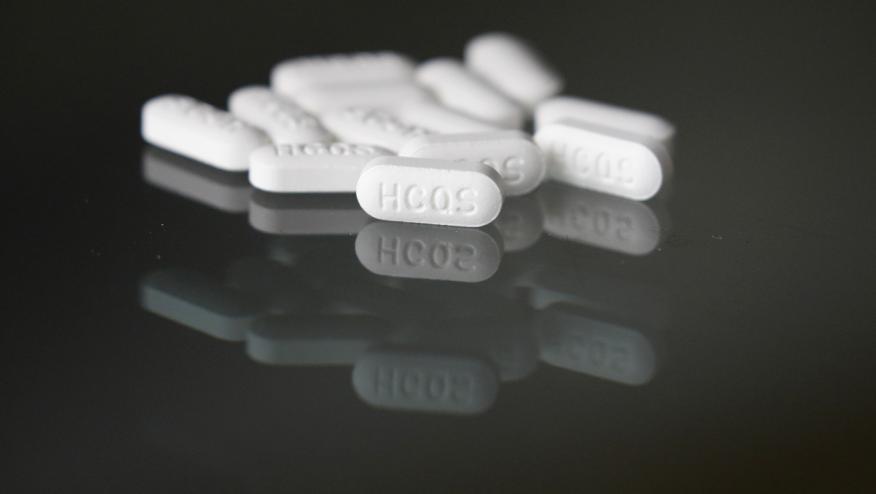Our old friend, hydroxychloroquine Save

After an action packed weekend, RheumNow Live 2023 concluded on Sunday with a half-day session on systemic lupus erythematous and ankylosing spondylitis discussing many new medications that are revolutionizing rheumatology. Dr. Laurent Arnaud, a professor at Strasbourg University in France, however, took the time to review one of our oldest therapies: hydroxychloroquine. He outlined how the anti-malarial medication has efficacy and widespread usage in lupus.
Dr. Arnaud (@Lupusreference) detailed the complex mechanism of action of hydroxychloroquine, which is a weak base that increases lysosomal pH. The molecule works through and inhibition of toll-like receptor (TLR)-7/9 which decreases downstream inflammatory cytokines in SLE. Hydroxychloroquine is the mainstay of treatment and first-line in all patients, aside from few with contra-indications. There are many benefits known for hydroxychloroquine usage including decreased mortality, organ damage, and improvement of skin and joint disease. Dr. Arnaud reminded that much of the data is from observational or withdrawal research, rather than prospective placebo-controlled data, but the preponderance of this data strongly supports its widespread usage.
Contraindications for usage including drug allergy, ophthalmologic disease that prevents appropriate monitoring, renal and hepatic disease, and conditions exacerbated by hydroxychloroquine including psoriasis, myasthenia, and acute intermittent porphyria were reviewed. As many are relative contraindications, hydroxychloroquine can often be used in these patients with caution and monitoring drug levels can be used in patients with concerns for drug toxicity from impaired clearance.
The side effect profile of hydroxychloroquine includes gastrointestinal symptoms, visual disturbances, rash, pruritis, and tinnitus. A dose reduction or temporary discontinuation may be needed for these symptoms, or patients may be transitioned to chloroquine. Recent data reassures physicians that arrhythmia secondary to QTc prolongation is very uncommon in lupus patients on hydroxychloroquine, but baseline EKG may be warranted in patients on other QTc-prolonging medications. Cardiomyopathy secondary to hydroxychloroquine is very uncommon with about 100 reported cases and diagnosed on endomyocardial biopsy. Other side effects include hypoglycemia, hepatitis, cytopenias, and vacuolar myopathy.
The best recognized complication from hydroxychloroquine therapy is retinal toxicity, which occurs in a dose-dependent effect and should be screened for annually. For this reason, there has been extensive debate on the optimal doses of hydroxychloroquine. A dose of <5 mg/kg/day has decreased retinal toxicity, but higher incidence of SLE flares. In contrast, >5 mg/kg/day has improved lupus activity but increases risk of retinopathy. Hydroxychloroquine levels can be helpful in monitoring for adherence and toxicity with an optimal level between 750-1200 ng/mL. Smoking has been demonstrated to decrease efficacy of hydroxychloroquine. Dr. Arnaud also reviewed data showing high flare risk in patients upon discontinuation of hydroxychloroquine, and urged providers to maintain therapy on patients under good disease control unless retinal toxicity or other complications develops.
Join The Discussion
Hello, thank you for your great summary of Dr. Arnaud´s session.
I wanted to ask you if there is any possibility to watch the session?
Thank you.










If you are a health practitioner, you may Login/Register to comment.
Due to the nature of these comment forums, only health practitioners are allowed to comment at this time.